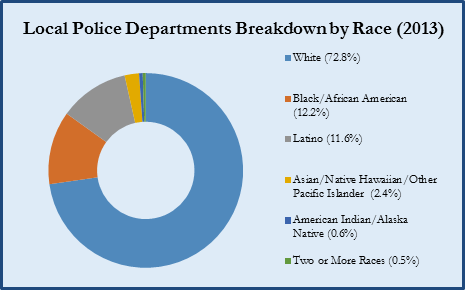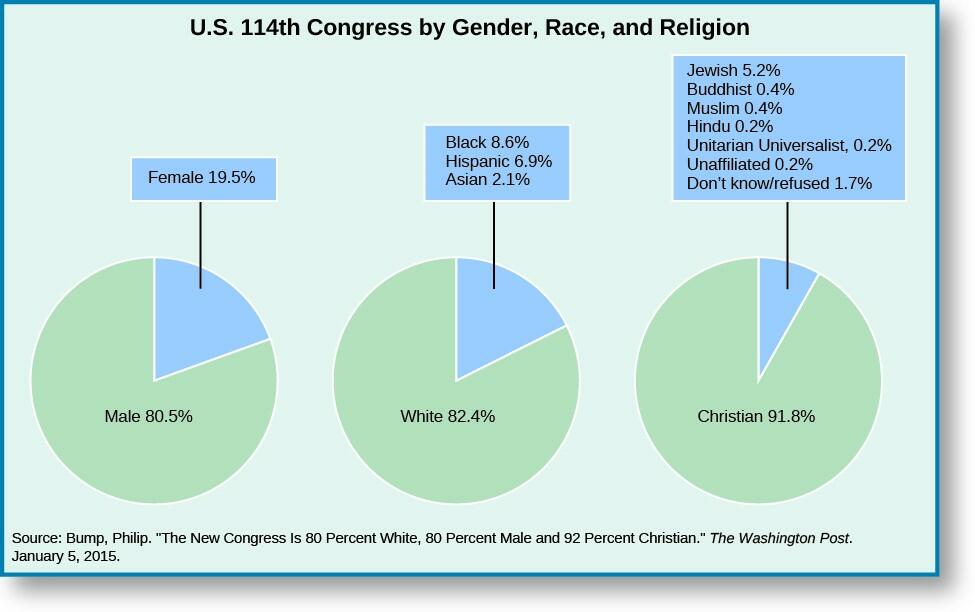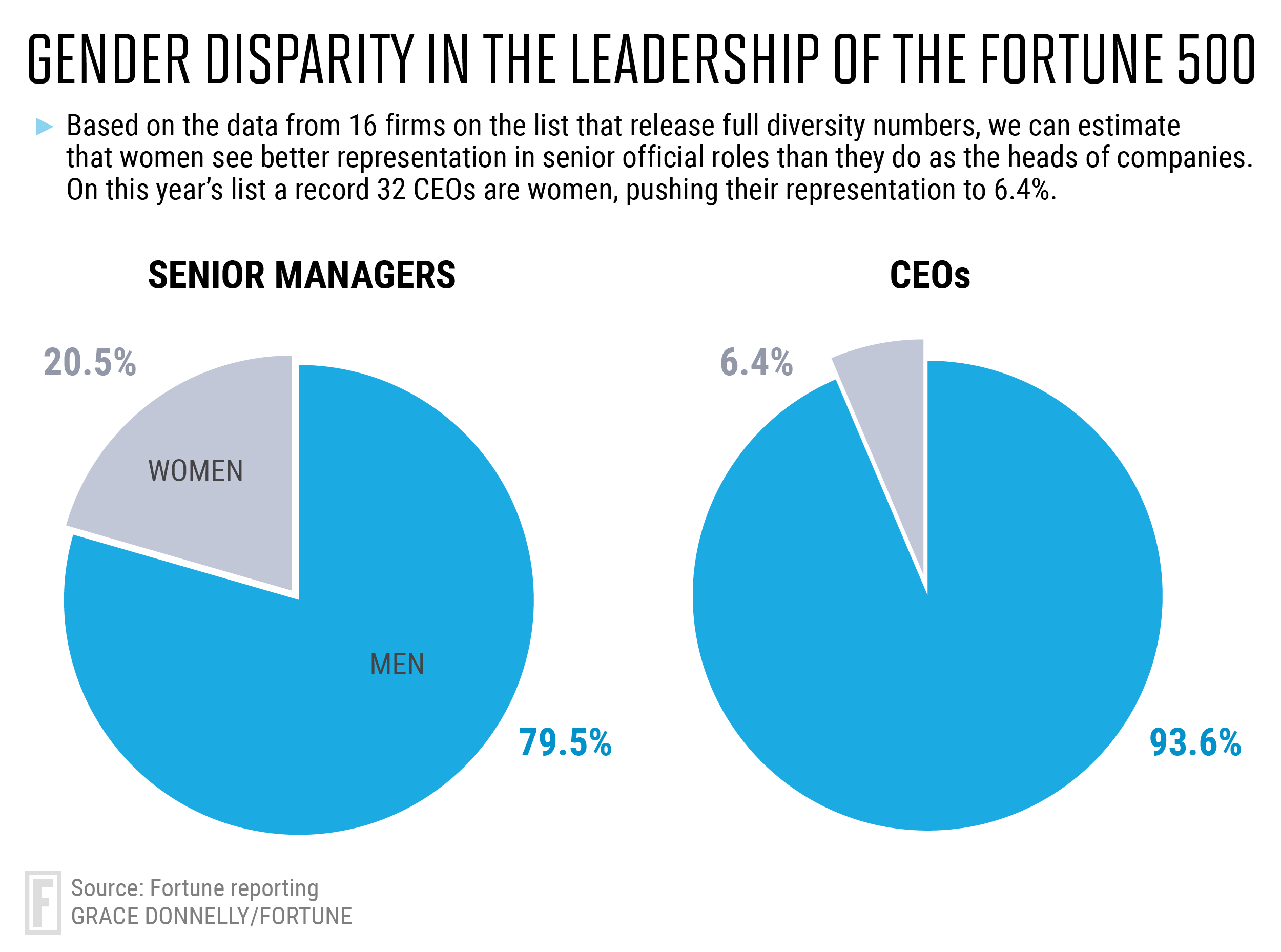Abstract
Lack of diversity in the United States’ public administration has been a major concern for the past several decades. The Civil Rights Movement of the 1960s helped in brining attention to the suffering and neglect that the minority groups, especially the African Americans, were going through in this country. Since then, there has been an attempt to ensure that there is a balanced representation of people from different races, ethnicity, gender, religion, and sexual orientation. However, that balance is yet to be realized. Whites still hold important positions allowing them to make and implement policies they feel are appropriate in the country. The study emphasizes the need to have dialogue, especially when making important laws and regulations that affect everyone, to ensure that views of the minority are not ignored. It may not be easy to achieve equal representation in public administration because of the varying population of people from different races, religion, and sexual orientation. However, objective dialogue and selflessness can help to ensure that every American feels represented in policy-making and implementation.
Introduction
Diversity in the workplace is a major concern in the United States. There is the desire to ensure that people of different races, religion, gender, ethnicity, and sexual orientation are effectively represented and allowed to contribute on issues relating to public administration. However, Selden (2015) argues that lack diversity and equal representation and effective participation at all levels of decision-making in political, economic and public life is still a major concern in the country. Although the country has made tremendous steps towards promoting a new culture that is accommodative to people of diverse background, there is still a feeling that some members of society are still ignored. Finding ways of including everyone in public administration, especially when it comes to issues relating to important decision-making processes, is crucial in enhancing harmony in the country. The effective representation helps in ensuring that no one is ignored when developing major public policies that affect lives of everyone. The following are the specific questions that the researcher seeks to answer through this study:
- How does a lack of diversity play a role in limited representation in public administration in the country?
- What is the history of diversity in public administration in the United States?
- What is the current situation on the issue of diversity in the United States’ public administration?
- Why is lack of diversity in public administration an important topic for the study?
Background on the Issue
The United States is one of the most diversified countries in the world. According to Braedel-Kühner and Müller (2016), the country has been the preferred destination for immigrants coming from different countries. Some of them come through legal means while others sneak into the country through the porous borders in search of employment and a better life than the one they had in their home country. Proper representation has been a major issue. Selden (2015) explains that people of color, women, gays, Muslims, and other minority groups are not effectively represented in public administration. In such a situation, it is not easy for the government to make policies that adequately represents their interests. Gooden (2014) states that a section of the society still hates gays, and given opportunity, they can make policies that would prohibit such practices. Similarly, some people still associate Islam with terrorism and believe that these people have no place in the country (Norman-Major & Gooden, 2015). The only way of moderating such extremism in public administration is to have everyone represented, especially at the decision-making level. The paper will analyze the past and present nature of the problem, and propose ways in which it can be solved in the future.
Detailed Presentation of the Importance of the Issue
In a highly diversified society such as that of the United States, peaceful coexistence can only be achieved when everyone’s interests and concerns are taken into consideration in public administration. Katherine, Riccucci, and Freyss (2014) argue that diversity challenges include race, gender, religion, ethnicities, and sexual orientation. Some minority groups feel that they are not adequately represented in public administration and as such, their views do not matter in the country. Studies show that such concerns are true. As shown in figure 1 below, about 73% of the local law enforcement agents are Whites. Their dominance ensures that their interests are always represented in most of the decisions made by the police departments. When making promotions, Whites are more likely to climb the career ladder faster than any other race in the country. They get a privileged position because of a system that favors them. The figure below shows that African Americans account for only 12% of the local police workforce, Latinos make 11%, while Asians and native Hawaiians account for just 2.4%.

The disparity is not expressed only in the law enforcement agencies. Ongaro (2019) explains that Whites dominate various other sectors of the economy, especially those with good salary or positions of power. Figure 2 below puts it into perspective. As of 2015, over 80% of the United States 114th Congress was male. It is important to note that the population of women in the country is slightly higher than that of men (Norman-Major & Gooden, 2015). However, their representation in the Congress was less than 20%. It shows a trend where men dominate positions of power at the expense of women. The figure also shows that White was the dominant race, accounting for over 82% of the population, followed by Blacks at slightly less than 9%, Hispanics at about 7%, and Asian at 2%. In such a House, Whites can pass any law they consider desirable to their race with ease. They have more than two-thirds majority needed to make critical decisions in the country. Once they pass a bill and send it to the President, who is also a White, for ascent, then the concept becomes a low.
The White-dominated police department will then have the task of implementing the law, which then reaffirms the claim that Whites can easily have their way with very little opposition from other races in the country. In terms of religion, Christians dominate the Congress, at about 92% while Jews come second. Buddhism, Islam, Hindu, and other religious groups account for less than 2% of the Congress’ population. When making laws that affect everyone in the United States, the views of these minority groups may not matter, unless they get the support of the majority. Sicakkan (2016) explains that the majority can only support them if there is a shared view, and the dominant population feels safe under such a new legislation.

Past, Present, and Future Situation, and Associated Challenges
When analyzing the problem of lack of diversity in public administration, it is important to compare the past and the present to predict the future. According to Rice (2015), there was a time when both the Senate and Congress were exclusively for White men. African Americans and other minority groups had to appoint a White to represent their interests in Parliament. During that period, it was hard to imagine that a Muslim would be in any of the houses (Norman-Major & Gooden, 2015). Important public administration positions, especially those that had good salaries, were also held by White men as they were considered superior to the rest of the population, hence they had the capacity to make informed decisions on how the country can progress.
African Americans felt marginalized and as such, they started rebelling against establishment. Sometimes such protests would turn into battles between the law enforcement agencies and African Americans. The Civil Rights Movement of the 1960s had a major impact on the way African Americans were viewed in the country (Stazyk & Frederickson, 2018). They managed to gain the attention of the policy makers and the public. Since then, there has been a genuine attempt to take into consideration views of the minority in public administration. The election of President Barrack Obama into the highest office in the land was an indication that the American society had evolved and could now embrace an African American president. Muslims, Buddhists, and Jews are also in both the Congress and Senate (Sicakkan, 2016). The trend shows that the challenges that existed in the past in terms of racial and religious inclusivity are being overcome. The future is more promising than the past as society embraces the view that the way forward is to embrace diversity instead of fighting it.
Way Forward to Near Equal Representation and Effective Participation
It is desirable to have a near equal representation and effective participation at all levels of decision-making in political, economic and public life. However, Ongaro (2019) says that in a democratic society where the majority always has their way, it may not be easy to have an optimal situation where every group feels effectively represented. The desire of each group is to have a situation where those in positions of power can respect their views. Stazyk and Frederickson (2018) believe that a policy should be enacted to ensure that the minority groups are represented in public administration through special appointment. These appointees should be responsible for presenting views of those they represent. Through dialogue, they can help the majority to understand why such a policy would be important or detrimental to their group.
The aim is to have a system where interests of everyone are protected while at the same time allowing democracy to have its way. Rice (2015) explains that a system should exist where policies are made and enforced after objective debates and with the interest of everyone taken into consideration. In many cases, the issue is not to have equal representation. In fact, it is common to have cases where those in position of power ignoring the interest of those whom they represent. As such, the focus should be on having a platform where decisions made reflect the interest of everyone.
Discussion of Possible Solutions
The United States is a highly diversified community that has people of different races, religion, ethnicity, and sexual orientation. Although public administration has been dominated by the majority Whites, Sicakkan (2016) explains that there has been an attempt to have a system where everyone feels represented and respected. The goal of this study is to come up with ways that can balance out existing inequalities in the public administration. It is important for the world to make a profound change to ensure all people, regardless, have better access and opportunities to lead the institutions that govern our societies. Selden (2015) says that it all starts with proper representation. It is not possible to hold the argument that society is becoming tolerant of diversity and divergent views if representation is skewed in favor of one section. Creating a platform through which people of varying races can be represented is one of the best ways of solving this problem. Having an equal representation may not be possible in this democratic society. However, it is possible to have a situation where almost everyone is represented in public administration. Their presence in such positions is meant to enable policy makers to understand views of their people.
There needs to be an increase in participation and leadership in public institutions from a diverse panel. Rice (2015) says that the Congress, Senate, and other legislative positions at the state and county levels should have adequate representation of people from diverse background. It may not be possible to make legislations that addresses specific concerns of women if the policy makers do not involve women. In case some people cannot be elected through democratic processes because of their minority population, it may be necessary to have appointive positions for them. The goal is to ensure that the house is as representative of the entire population as possible. The legislative houses should encourage consultative forums when debating on issues that may have a significant impact on a section of society. Fighting stigma and stereotypes is important in promoting objectivity when making decision. Those who are trusted with positions of power should always remain objective when making decisions or taking any action that may have devastating consequences on the minority groups.
It is necessary to understand how proper representation could improve how the current concerns in public administration. According to Braedel-Kühner and Müller (2016), besides the legislative arm of the government, the judiciary and the executive also have a crucial role to play in promoting and embracing diversity. The United States Supreme Court has nine justices, and none of them is a Muslim. In such a situation, when an individual of Muslim faith has an issue with a Christian or a Jew relating to religious conflict, going to the Supreme Court may be considered an inappropriate decision. As Ongaro (2019) observes, judges are often expected to make decisions based on facts other than personal feelings or shared interests. However, it is common to find cases where they are influenced by public opinion, personal affiliations and a host of other factors unrelated to the constitution. There is only one Hispanic and one African American in the American top court. None of the nine justices is publicly known to be a gay, and as such, the personal opinion on the issue may be another factor that can influence their judicial decisions. Ensuring that there is a proper representation in the justice system creates a sense of legitimacy. Everyone feels represented and protected by the courts. They feel that they can trust decisions of judges and magistrates.
The executive arm of the government should also be as representative as possible. When selecting members of the cabinet, the president should be compelled to ensure that there is adequate representation of people from diverse backgrounds. Currently, White male dominates the cabinet of President Donald Trump (Stazyk & Frederickson, 2018). Such disparities may create discomfort among the rest of the population who feel that they are not represented in the government. Important government policies such as the head of CIA, FBI, and the justice department should have equal representation. As Rice (2015) observes, equal representation does not mean the appointing authority should ignore competency in an effort to have a balanced system. It entails selecting the most qualified candidates from the population in a way that makes it possible to have a diversified workforce. It involves eliminating barriers that often limit the ability of women and minority groups from achieving career success.
The private sector also has a role to play in an effort to promote a society where everyone feels represented. According to Braedel-Kühner and Müller (2016), the problem often starts in the private sector. In most of the cases, those appointed in senior government positions are chief executive officers and top managers in various large companies in the country. In case the private sector fails to provide a perfect platform for women and minority groups to succeed, then those in the legislative and executive arms of the government will continue to ignore them as being irrelevant in political discourses. As shown in figure 3 below, women accounts for only 20% of the workforce who are in senior management positions in the private sector. Their representation gets even smaller, at 6%, when it comes to those who are chief executive officers in Fortune 500 companies in the country. As such, the private sector also has a role to play in promoting equal representation in the country.

Conclusion and Recommendation
Diversity in public administration has been one of the important issues in public discourses over the last several decades. As shown in the discussion above, the country has made impressive steps towards encouraging equal representation in public administration. The topic of diversity is critical because it defines the level of harmony and unity within the country. When people feel represented, they tend to believe in and respect the rule of law. They would believe that the system works for them and for everyone in an effort to have a just country where everyone’s interests are respected. Analyzing the historical records relating to diversity in public administration and the current situation shows that the society is becoming more accommodative of diversity than was the case in the past. The following recommendations should be considered to help improve the current situation:
- The legislature should enact laws that require effective representation of people from diverse backgrounds in different public administrative positions.
- The government should engage in public awareness campaign to promote diversity in public administration and in the private sector.
- The justice department should be committed to ensuring that individuals presented to court for violation of laws relating to diversity are punished as enshrined in the laws.
References
Braedel-Kühner, C., & Müller, A. (2016). Re-thinking diversity: Multiple approaches in theory, media, communities, and managerial practice. Wiesbaden, Germany: Springer.
Gooden, S. T. (2014). Race and social equity: A nervous area of government. New York, NY: ME Sharpe.
Katherine, C. N., Riccucci, N. M., & Freyss, S. F. (2014). Personnel management in government: Politics and process (7th ed.). New York, NY: CRC Press.
Norman-Major, K. A., & Gooden, S. T. (2015). Cultural competency for public administrators (2nd ed.). New York, NY: Routledge.
Ongaro, E. (Ed.). (2019). Public administration in Europe: The contribution of EGPA. Cham, Switzerland: Palgrave Macmillan.
Rice, M. F. (2015). Diversity and public administration: Theory, issues, and perspectives. New York, NY: M.E. Sharpe.
Selden, S. C. (2015). The promise of representative bureaucracy: Diversity and responsiveness in a government agency (2nd ed.). New York, NY: Routledge.
Sicakkan, H. G. (Ed.). (2016). Integration, diversity and the making of a European public sphere. Northampton, MA: Edward Elgar Publishers.
Stazyk, E. C., & Frederickson, H. G. (Eds.). (2018). Handbook of American public administration. Cheltenham, UK: Edward Elgar Publishing Limited.
Wal, Z. (2017). The 21st century public manager. London, UK: Palgrave.